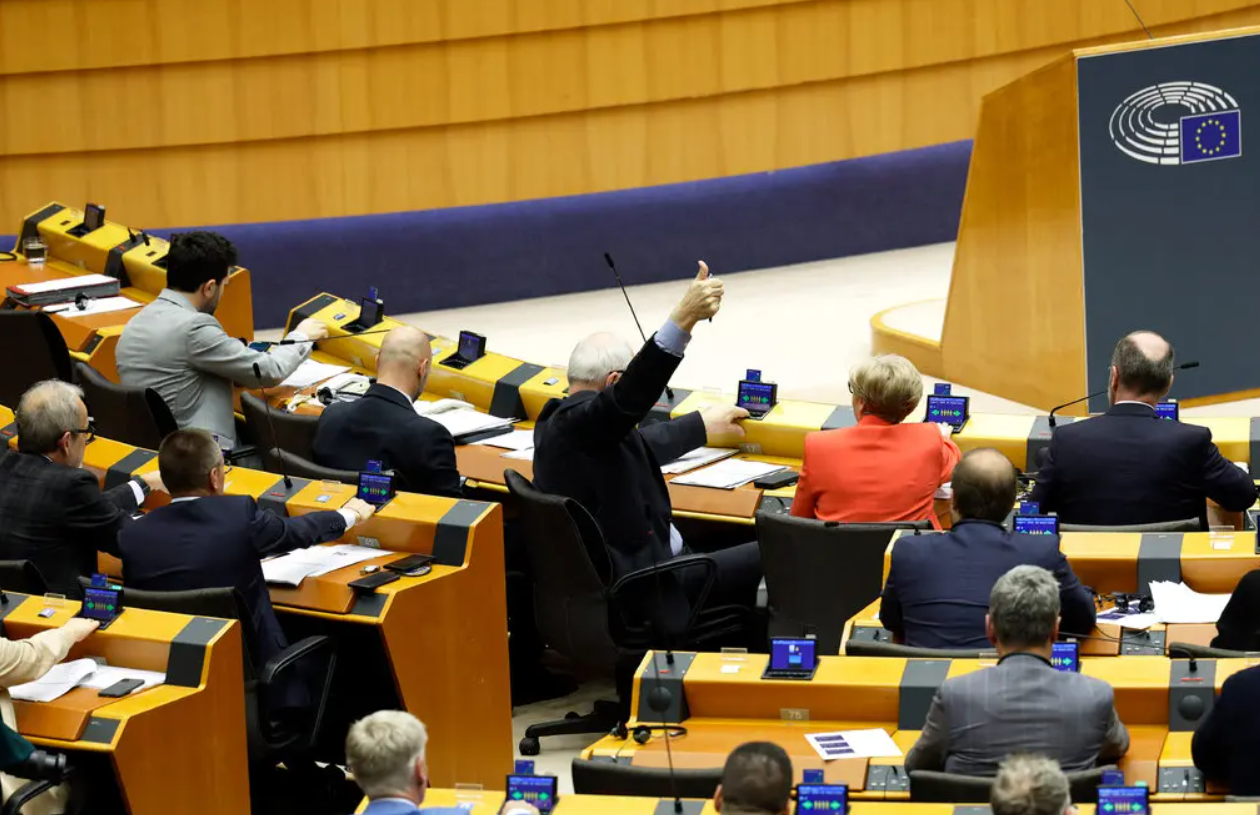GP Short Notes # 865, 12 April 2024
 Padmashree Anandhan
Padmashree Anandhan European Parliament approves pact on Migration and Asylum reform: Three Implications
What did the European Parliament do?
On 10 April, the European Parliament approved the landmark New Pact on Migration and Asylum reforming the EU’s migration and asylum rules. The latest EU Asylum and Migration Part aims to address the impact of migration faced by the EU through fastening the rejection and delegating the application screening process equally across members. The vote comes after continued debates between the conservatives and liberal lawmakers in the northern and southern Europe. As of 2023, the asylum applications had reached “seven-year high.” In response to the vote, Roberta Metsola, President of the European Parliament said: “History made. We have delivered a robust legislative framework on how to deal with migration and asylum in the EU.” Ursula Von Der Leyen, European Commission President stated that the pact would increase the efficiency of the application processing. Whereas Olaf Scholz, German Chancellor called the move as “historic and indispensable.” He added: “…limits irregular migration and finally relieves the burden on the countries that are particularly badly affected.”
Under the new changes, migrants who enter the EU illegally will undergo strict identity, health and security checks, including biometric readings of faces and fingerprints. Within seven days the migration governing authorities have to complete the process, assessing if the migrants should be granted or sent back origin country. However, in case of asylum-seekers from countries such as Tunisian, Morocco and Bangladesh where many are overall rejected will be now “fast-tracked” in the “detention centres” near to the EU’s external border to proceed with quick deportation. The main challenge in implementing the reform is over shared responsibility clause. The reform aims to alter the “Dublin-III” which decides a country’s responsibility in application screening. Italy, Greece and Malta who have already flagged issues over difficulty in handling influx in asylum centres and have accused the neighbouring states for not helping in preventing such illegal entry of migrants. Under the reform, if any such member-state shows “unwilling or unable” to host a set of asylum seekers physically it shall be assisted financially or with personnel.
Why approve now?
The problem of migration has been long entailed debate for the EU but the past decade the negotiations have fast-tracked and more rapid since 2023. Key reason is to break the migration policy barrier ahead of the European Parliament elections June 2024. Along with the pressure of elections, thwarting the rise of far-right is another spooking factor for the Parliament and Council to finalise the texts and adopt the policy. The Parliament may have met the time factor but real task lies ahead in re-building the mutual trust between the EU member-states. In handling the asylum influx or implementation and responsibility sharing, Italy, France, Malta and Greece had earlier raised concerns over missing common migration management system. In December 2023, Hungary and Poland outrightly rejected the reform against the “constitutive elements” of the pact. While the European Parliament argues to overcome such political blocks and aims to address the migration through common approach and thereby bridging the trust between the member states. Common approach and a uniform migrations application processing procedure has been a long call amongst the EU states, but the reform not only standardises a common procedure, it majorly intends to stop the migration flows. It now expands the use of border control procedures and quicker assessment to remove the obstacles to deportation.
What does it imply for Europe?
First, extended delegation of power to member states through Asylum Procedures Regulation (APR). Under this regulation, the member states are allowed to expand the usage of border procedures to enable quick assessment of application which are “unfounded or inadmissible.” Such reduced discretion and permit for the states to use solidarity measures (EU states can choose between “relocation obligations or financial contribution.”) reduced the intervention of the European Parliament.
Second, low intensity obligations at national level. After the European Parliament approval, the commission’s implementation plan should be followed by the member-states national plan. It allows the state to opt a slower process to draft its implementation after taking account of its capacity, technical support and mainly its priorities. The push for an ownership at the national level, may seem to impose less obligation on the states but it would also result in the Commission identification of “systemic weakness” helping it to finetune its approach to migration.
Third, shifting responsibilities to third countries. Taking the case of the UK which has delegated the asylum deportation to Rwanda. A similarity can be viewed among the northern and southern European countries and in future eastern European states can join along to prefer outsourcing the migration management to third countries over high deportation rate.